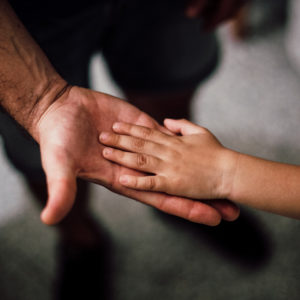
When my daughter was first diagnosed with an anaphylactic allergy to dairy, I vowed right then and there that it would not prevent her from experiencing anything life had to offer.
Except of course for anything containing, or even thinking about containing, dairy. She would spend summers at camp, go to sleepovers, and eat in restaurants. At the time, I was not thinking about how she would travel with food allergies.
That is one thing I have always struggled with. Just the thought of the logistical nightmare that comes from eating out for so many meals when traveling with food allergies was exhausting and overwhelming. As she got older, I knew that I had to educate her on how she could travel safely because before long she would be heading out on her own.
One of our first big trips was a two-hour flight from our home in New Brunswick to the big city of Toronto to see a One Direction concert. We were traveling with four other people, so I felt like I had lots of support from the other moms on the trip.
In hindsight, I was not nearly prepared enough. As a result, she pretty much ate nothing but beet salad for the entire trip. I wish I was kidding but sadly, I’m not. Lesson learned there!
Since then, we’ve gone on a few other trips that have been much more successful. Here are 8 Tips For A Safe & Successful Trip when traveling with food allergies that I’ve learned over the years.
1. Make A List and Pack Smart

One of the first things that need to be on your mind when traveling with food allergies is your medication. Whether it is an everyday prescription or a rescue medication like an Epipen, you need to make sure you have enough to last for the duration of your trip and then some.
Do not pack all of your medications together. You might not want to pack them all in your carry on but you also don’t want to pack them all in your checked luggage. If your luck is like mine, the airline will lose your checked bag!
There is nothing worse than rummaging through a carry-on bag. I pack all of her medications in a pouch. It not only keeps them all together but I have a brightly colored one so it is easy to find in my bag. I pack one in my carry-on and one in my checked baggage.
Since paper and pen is not for everyone, another great tool you can use to make your list is Pack This. This great app allows you to create an electronic packing list that will not only keep you organized but also easily lets you share your list with fellow travelers.
2. Pack Extra Snacks

Travel delays happen. Sometimes flights are late or restaurants are busy. It is nice to be able to grab an extra snack out of your bag when you need it. I have found that my daughter is more willing to throw caution to the wind and eat foods with “May Contain Dairy” on the label (which she is not supposed to do) when she’s over hungry.
She definitely would have eaten less beet salad on that first trip if I had brought more food from home.
3. Do Your Research

Preparing for a trip with a food allergy can quickly start to feel like a recon mission that rivals anything put on by special military forces. This includes things like:
- Finding hotels that have rooms with kitchenettes
- Making a list of restaurants that have safe options and calling them to confirm
- Locating the hospital nearest to where you are staying in case of emergencies
- Locating nearby pharmacies in case medicines need to be replaced. In addition, call to see what the policies are when it comes to replacing meds for travelers.
Now when we are planning a trip, I keep all of my homework in a journal, and it becomes a trip keepsake.
4. Call Ahead

Don’t be afraid to pick up the phone and call ahead to hotels and restaurants. If you know ahead of time that there is nothing safe for you to eat at the hotel’s free breakfast maybe you will toss a few packages of instant oatmeal into your luggage.
By calling ahead and meeting with the chef at an away camp my daughter was attending, she was treated to a week of custom meals created by what was essentially her own personal chef while the rest of the campers ate food from the serving line. She was definitely envied by all the other campers!
5. Make Some Online Friends

Find yourself an online allergy support group. These are typically bursting at the seams with tidbits of game-changing information. Don’t be afraid to join them and to ask lots of questions.
Some of these groups have a fairly large membership so you may be surprised to find other folks who have already traveled to where you are going.
Please keep in mind though that some ingredient information differs depending on where you are located and that ultimately when it comes to ingredients and manufacturing policies, your best option is always to contact the company directly.
6. Breach The Language Barrier

When traveling, you may find yourself trying to explain your allergy and place your order in a different language, or to someone who does not speak your language fluently. This task can be paralyzing.
One way to navigate around that is to bring Chef’s Cards with you when you travel. These little cards are given to restaurant staff when you are seated. On it, you should have a list of your allergens as well as a list of ingredients you are avoiding. It should also indicate that you have an anaphylactic allergy.
Using these cards, the chef will know exactly what you need to avoid and why without having to worry about things getting lost in translation.
7. Don’t Be Afraid To Wipe It Down

Even though public places have stepped up their cleaning processes because of the pandemic, there is a little corner of my OCD mind that says I need to do it for myself too. That’s why I always have an antibacterial wipe handy.
I’ve used them to wipe down plane seats, belts, and trays, as well as doorknobs and other hard surfaces in hotel rooms.
It’s worth carrying handy wipes to not have to worry about a contact reaction causing a break out of hives.
8. Inclusion Is Key

This tip might seem undeserving of a mention but I sincerely beg to differ, especially if you are traveling with a group. A trip is meant to be a social event. It is a time of fellowship and of course, mealtime is the best time for fellowship.
My daughter and I have traveled with groups before and it can be hard for the whole group to agree on a place to eat. Sometimes, when there is a more dominant person in the group, you can find yourself sitting in a restaurant where you can’t eat any of the food or observing an activity that you can’t participate in.
I’ll never forget the sad look on my daughter’s face as she watched her teammates race around a candy store picking out treats for the long drive home knowing that she couldn’t have any of them. I regret not advocating louder for my daughter at that moment.
Inclusion is key to a successful trip with food allergies.
Now that you’ve seen these 8 tips for Traveling With Food Allergies, what do you think? Comment below. And please feel free to share any other tips you have learned along the way.















2 Responses
Great tips! Your daughter is lucky to have such a conscientious and loving mom!
Thanks, Debbie!